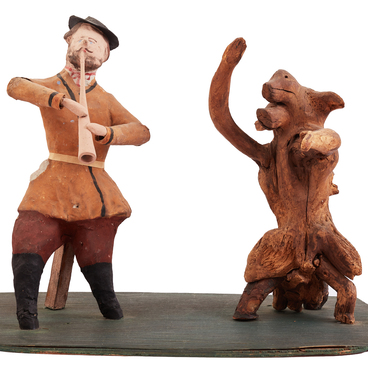Tatiana Nikolayevna Glebova began her artistic journey in Leningrad in the 1920s. From 1926 to 1932, she was a member of the Collective of Masters of Analytical Art. She participated in joint projects of the group, including the famous exhibition at the Soviet House of Press and the design of the book “Kalevala”.
In 1927, she started working as a book illustrator for the magazines “Chizh” and “Yozh”. Together with the scene painter Vladimir Vladimirovich Dmitriyev, she created the scenery for Richard Wagner’s opera “Die Meistersinger von Nürnberg” at the Maly State Opera Theater.
From 1941 to 1942, Tatiana Glebova lived in besieged Leningrad and carried on her artistic work. She was later evacuated to Alma-Ata and started working at the Kazakhfilm movie studio. In 1943, she married the artist Vladimir Vasilyevich Sterligov, and two years later, they returned to Leningrad together.
The State Museum of the History of Saint Petersburg contains about 180 works by Tatiana Glebova from different periods, which represent the artist’s entire career, except for the later period.
In 1988–1989, the museum acquired several works created in the 1930s from the artist’s sister Lyudmila Nikolayevna Glebova. One of them is of particular significance — it is a group portrait, in which the artist painted herself and the people close to her.
That painting depicts the organist Isaiah Alexandrovich Braudo, the painters Pavel Nikolayevich Filonov, Alisa Ivanovna Poret, Solomon Moiseyevich Gershov and Pavel Mikhailovich Kondratyev, Vladimir Vladimirovich Dmitriyev and his wife Yelizaveta Isayevna Dolukhanova, the ballerina Vera Sergeyevna Kostrovitskaya and the pianist Maria Veniaminovna Yudina.
Tatiana Glebova painted this portrait of her friend, the organist Isaiah Braudo, in the 1930s. It is similar in style to his image in the group portrait. Isaiah Braudo was a performer, but he was also a researcher of early music, and this penchant was something he and Glebova had in common.
Maria Yudina recalled,


